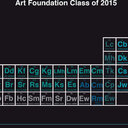[Mid-term efficacy of laparoscopic sacral colpopexy of combined transabdominal-transvaginal approach in the treatment of stage Ⅳ pelvic organ prolapse].
Palabras clave
Abstracto
Objective: To evaluate the clinical effect after laparoscopic sacral colpopexy (LSC) of combined transabdominal-transvaginal approach on stage Ⅳ pelvic organs prolapse (POP). Methods: The clinical data of 65 patients undergoing LSC of combined transabdominal-transvaginal approach from January 1st, 2010 to July 30th, 2017 due to POP stage Ⅳ in First Affiliated Hospital of Guangzhou Medical University were retrospectively analyzed. Objective outcome was assessed by comparing preoperative and postoperative pelvic organ prolapse quantification (POP-Q) systems. Subjective effects were assessed by comparing pelvic floor distress inventory-short form 20 (PFDI-20), pelvic floor impact questionnaire short form (PFIQ-7), pelvic organ prolapse/urinary incontinence sexual questionnaire-12 (PISQ-12) and patient global impression of improvement (PGI-I). Results: All 65 patients were successfully performed without any intraoperative complications. Fifty-three patients were followed in the clinic department and 12 were followed up by telephone. The follow-up duration was 6.1-80.3 months and the median follow-up duration was 24.5 months. The bleeding loss was 20-250 ml. Postoperative urethral catheter residence day was (2.5±1.1) days, length of postoperative stay was (6.2±1.7) days. The postoperative POP-Q scores were compared with preoperative scores which had significantly improved except pb (all P<0.01). The objective cure rates of vaginal anterior wall, apical and posterior wall prolapse stage Ⅳ were 90% (47/52), 100% (23/23) and 95% (20/21).About PGI-I, except for 1 patient who chose "improvement" , the other 64 patients (98%, 64/65) all chose "significant improvement" . Furthermore, preoperative and postoperative PFDI-20, PFIQ-7, and PISQ-12 scores were all statistically significant (all P<0.01). Subjective efficacy was significant. Three cases (5%, 3/65) of postoperative fever occurred. Two cases (4%, 2/53) had mesh exposure. Six patients (11%, 6/53) had recurrence of postoperative prolapse. Five cases had recurrence of vaginal anterior wall prolapse and no reoperation was performed; 1 case was recurrence of posterior vaginal wall prolapse who diagnosed as vaginal posterior wall prolapse stage Ⅲ; no recurrence of apical prolapse. The rate of reoperation (including exposed-mesh removal and pelvic floor reconstruction surgery) was 5% (3/65). Conclusions: The LSC of combined transabdominal-transvaginal approach has a high subjective efficacy rate. The objective cure rate in the case of apical prolapse stage Ⅳ is one hundred percent.The LSC of combined transabdominal-transvaginal approach has low mesh exposure, low postoperative infection and the reoperation rate, which is one of optional pelvic floor reconstruction surgery. However, there is still a risk of recurrence in patients with POP stage Ⅳ with severe bladder bulging.


